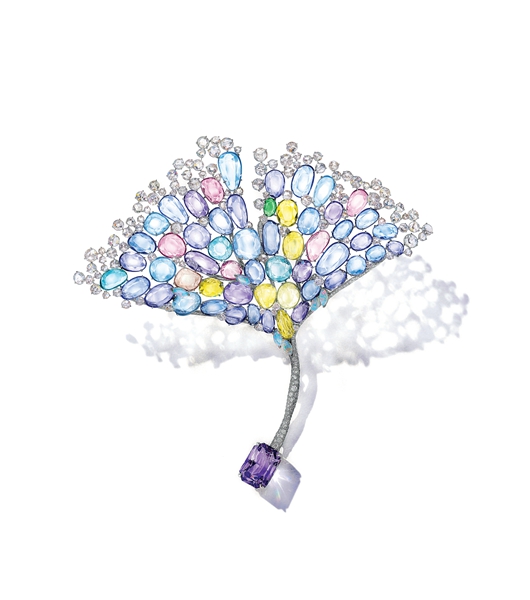

Jeweler, making a name for herself in Europe, finds her unique craftsmanship is attracting a growing audience, Xu Haoyu reports.
On March 15, the academic committee of The Museum of Decorative Arts in Paris held its annual roundtable conference to expand its collection. It was rare, but 12 experts all agreed on welcoming Feuille de Ginkgo, the creation of Feng Ji, into the museum as part of the permanent collection. The artwork has been shown to the public since the middle of April.
This is the first time that a jewelry artist from the Chinese mainland has been recognized by a national museum in Europe, and at the age of 36, Feng has become the youngest jewelry artist whose work was included in the permanent collection of this centuries-old art palace.
"I am honored to show the world with my works that China has the most original contemporary jewelry art and exquisite craftsmanship. In fact, great works can always speak for themselves and touch people from different regions with different skin color and age," says Feng.
The inspiration of Feuille de Ginkgo comes from a journey to Jardin de Giverny, the botanical garden that inspired Claude Monet.
"I was so enchanted by the species of all exotic plants and the layout of the garden. Even the dream I had there gave me lots of ideas," says Feng.
Évelyne Possémé, executive director and chief curator of the museum, praised: "The talent of the young artist impressed me so much that we couldn't miss this Feuille de Ginkgo. Comparing to the centuries-old artworks that are previously collected by the museum, Feng's unique artistic style symbolizes the future of jewelry."
Unlike many European and American jewelry designers who come from a family of jewelers and carry on family brands, Feng did not expect to enter the industry.
Born on the shores of the West Lake in Hangzhou, Zhejiang province, Feng's great-grandfather was a royal painter of the late Qing Dynasty (1644-1911).
After graduating from the China Academy of Fine Arts with a degree in Furniture and Product Design, Feng wanted to study sports car design at the Art Center College of Design in Los Angeles. However, she ended up flying to the United Kingdom for visa reasons, and claimed studied for a master's in jewelry design at the University of the Arts London. Later, while working for the jewelry department of fashion brand Alexander McQueen, Feng went on to study gemology at the Gemological Institute of America and the Gübelin Academy in Switzerland, and obtained a certificate in colored gemstone studies.
With an oriental cultural heritage and the adoption of the century-old Western craftsmanship, Feng is not limited by a certain style.
In her jewelry, created with botanical elements such as ginkgo leaves, taro lilies and dahlias, people can see her assimilation of the classic naturalistic style, a style that originated in the early 19th century when jewelers were influenced by the development of archaeology, botany and the Romantic poets to incorporate decorative patterns of plants and fruits into their jewelry.
With a strong emphasis on the penetration of light, shadow and color in a three-dimensional space, Feng shapes valuable stones into an undulating appearance.
She refuses to see emeralds, rubies and sapphires as expansive items, but subversively cuts them into extremely thin stones of varying size, transforming their original intense color into a crystal clear, translucent, almost infinitely transparent brilliance, and pouring out colors creatively like an impressionist.
Until the 14th century, because the size and natural brilliance often determined value, gems were often polished but rarely cut.